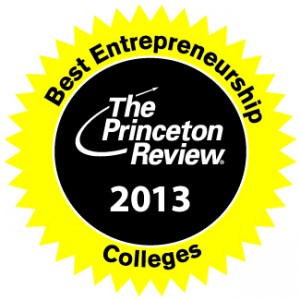Not everyone is prepared to be a successful entrepreneur.
In the new book Heart, Smarts, Guts and Luck, two successful venture capitalists and a management consultant surveyed a large number of successful entrepreneurs to uncover what traits they have in common. One of the traits — guts — particularly hit home with my experience as an entrepreneur and as a teacher of entrepreneurs.
The authors argue, and I agree, that guts is not a trait that you are either born with or not. Having the guts to be an entrepreneur is something that can be nurtured and developed. They identify three key elements to developing and nurturing guts in entrepreneurs.
Eighty percent of the successful entrepreneurs in this study said that their entrepreneurial guts were developed through experiences early in their lives.
I can cite several experiences from working in our family businesses that helped to toughen my skin. One in particular stands out. When I was in grade school my father partnered in a cleaning products distributorship.
Although I was only eleven, I was eager to become a part of this new venture. So I decided to sell the product door to door. My first sales call was to our next door neighbor, who was a good friend of our family.
Rather than pat me on the head and buy some product to be nice, she looked me in the eyes and said, “Tell me why I should spend our hard earned money on this stuff?”
I did not make the sale. I was left speechless and devastated. It was a hard lesson that I have carried with me the rest of my life. Nobody owes you anything in business – it is up to you to earn it.
The second key element for developing guts is training and education that prepares entrepreneurs how to make decisions in complex situations. We urge every student who comes into our program to start a business while they are in school because this kind of training is so important. It helps them to gain experience, confidence and learn from their mistakes in a safe environment. However, I am not one who thinks we should require every student to start a business as many schools are moving toward. I think that making starting a business an assignment misses a key aspect of developing true entrepreneurial guts – the courage to make the choice and cross the threshold to start a venture.
The final element of developing and nurturing guts is becoming part of a community of entrepreneurs. By joining an ecosystem of fellow entrepreneurs you gain peer support, wise counsel, and a group who can hold you accountable. We need to have our entrepreneurial guts reinforced, nurtured, and checked throughout our career.
Having guts to be an entrepreneur does not imply that you take careless risks – quite the contrary. Having guts to be an entrepreneur means that you are ready through experience to carefully and prudently manage and mitigate the risks that lie ahead.

